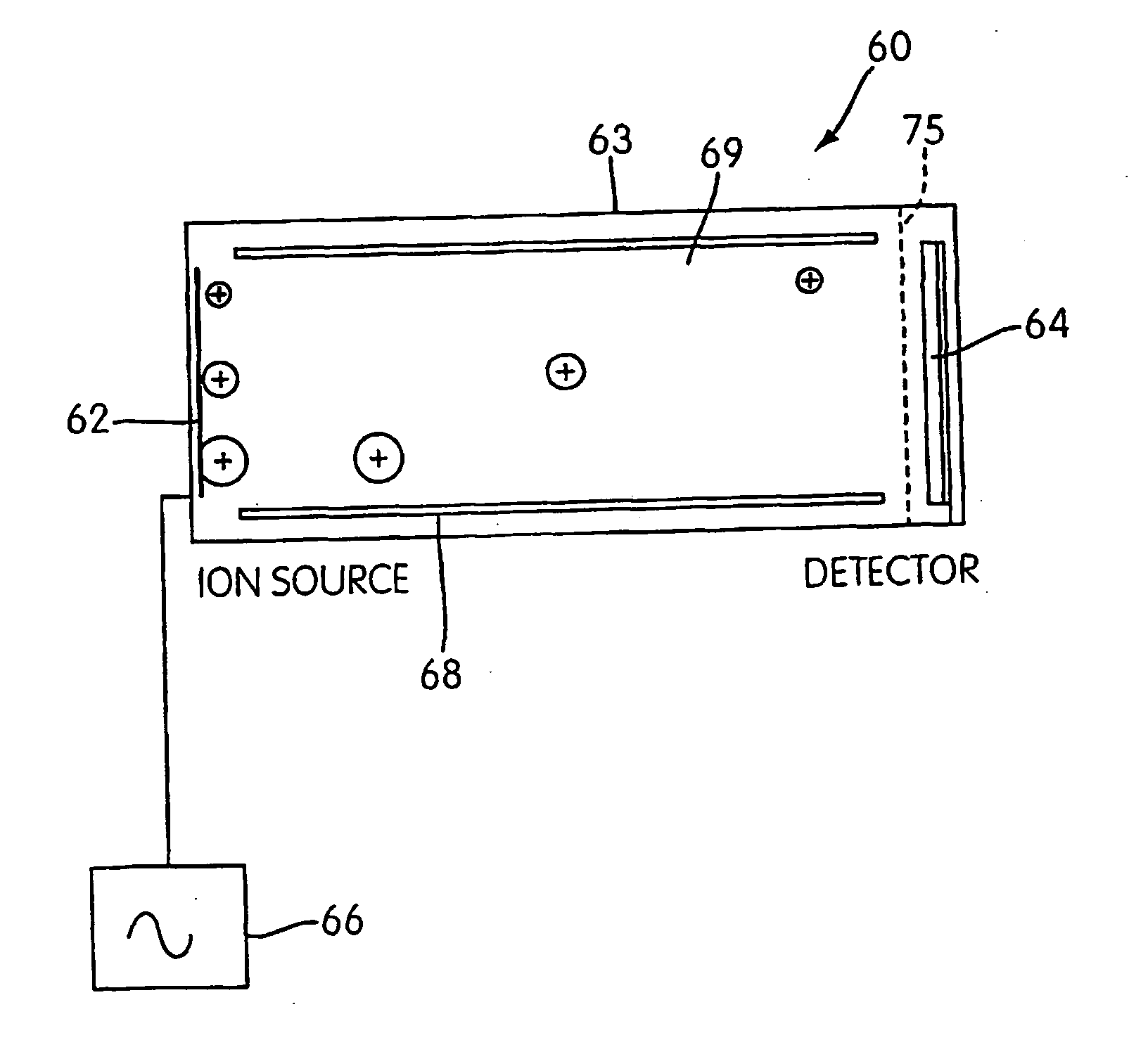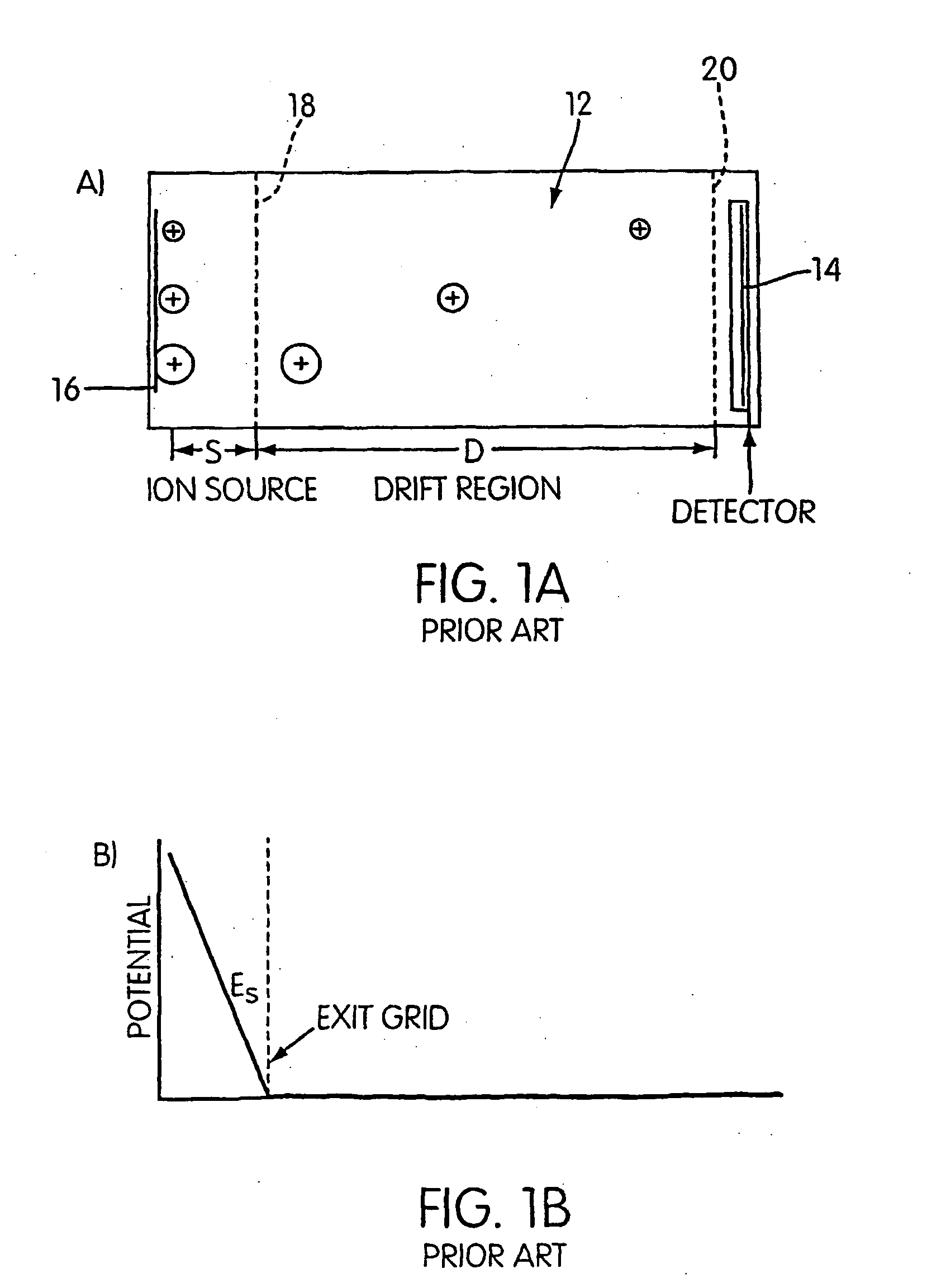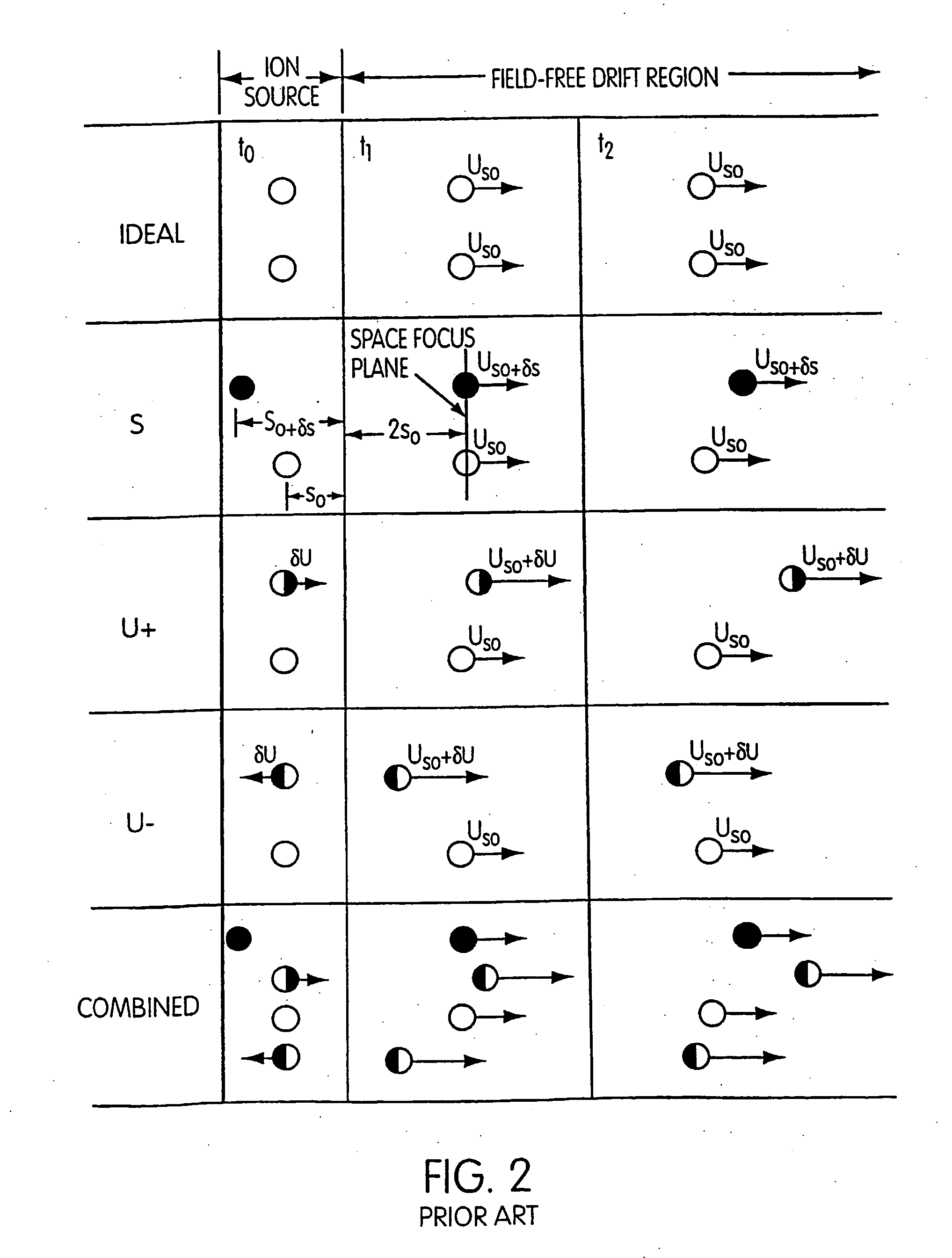Time-of-flight mass spectrometer combining fields non-linear in time and space
a mass spectrometer and time-of-flight technology, applied in the field of mass spectrometers, can solve the problems of reducing the resolution power, creating a distinct detrimental effect known as the turn-around time, and little time available for mass separation
- Summary
- Abstract
- Description
- Claims
- Application Information
AI Technical Summary
Benefits of technology
Problems solved by technology
Method used
Image
Examples
Embodiment Construction
[0061] One aspect of the present invention is to provide a time-of-flight mass spectrometer that uses a combination of static and dynamic non-linear electric fields (that is, electric fields that are non-linear in both space and time) to achieve the best resolving power in the analysis of any initial 3-dimensional gas-phase ion population.
[0062] In one embodiment shown in FIG. 6, the mass spectrometer 60 includes ion source 62, an evacuated tube 63 proximate the ion source 62 and adapted to receive ions from the ion source. The mass spectrometer 60 also includes detector 64 disposed at an end of the evacuated tube 63 opposite an end proximate the ion source 62.
[0063] The ion source 62 includes sample holder or sample probe for holding a sample to be mass analyzed. The ion source 62 also comprises a voltage source 66 that can be modulated in time to generate an electric field that can change as a function of time.
[0064] The ions are formed and accelerated by an electric field defi...
PUM
 Login to View More
Login to View More Abstract
Description
Claims
Application Information
 Login to View More
Login to View More - R&D
- Intellectual Property
- Life Sciences
- Materials
- Tech Scout
- Unparalleled Data Quality
- Higher Quality Content
- 60% Fewer Hallucinations
Browse by: Latest US Patents, China's latest patents, Technical Efficacy Thesaurus, Application Domain, Technology Topic, Popular Technical Reports.
© 2025 PatSnap. All rights reserved.Legal|Privacy policy|Modern Slavery Act Transparency Statement|Sitemap|About US| Contact US: help@patsnap.com



